We may receive a commission when you use our affiliate links. However, this does not impact our recommendations.
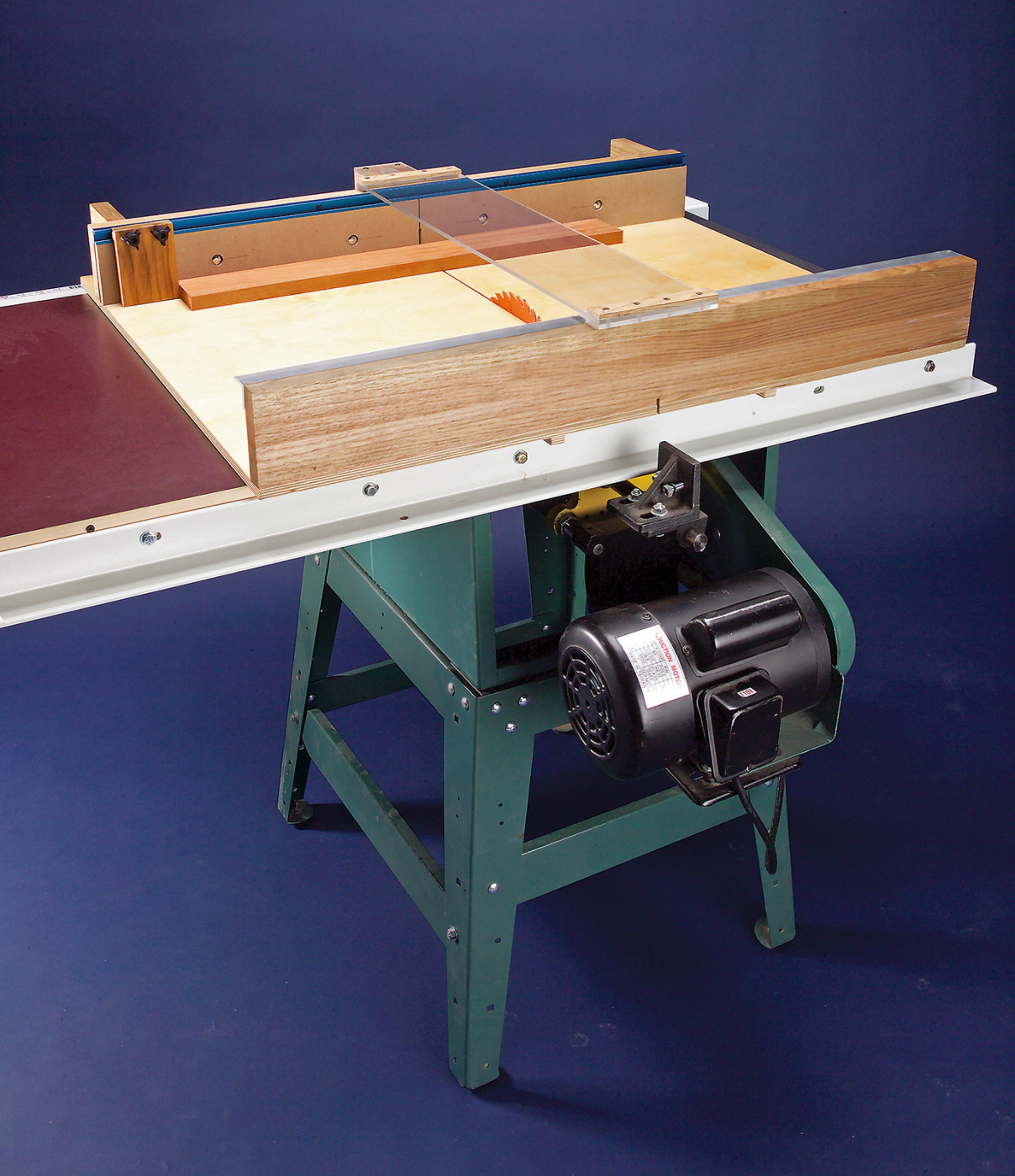 A split fence guarantees accurate cuts.
A split fence guarantees accurate cuts.
Whenever I want to make an accurate square cut, I reach for my crosscut sled. Unlike a miter gauge, its right-angle setting doesn’t need constant tweaking. My cuts are always right on the money.
Crosscut sleds have been around for a long time, but few are ideal. Many are heavy and hard to store. Most develop an extra-wide saw cut in the fence and allow the blade to throw sawdust in your face. My design solves all these problems.
Take a look at these great features:

Zero-clearance subfence.
Zero-clearance subfence. The subfence is composed of two adjustable sides, like many router table fences. When the saw cut between the sides widens with use, simply remove the subfences, re-cut their ends square and reinstall them. A zero-clearance slot allows you to quickly make a super-accurate cut. Just align a pencil mark on the workpiece with the saw cut in the fence and you’re good to go. A zero-clearance slot also eliminates tear-out.

Adjustable stop arm.
Adjustable stops. Two stops mount on the sled’s T-track, making repetitive cuts very easy to set up. One stop is for short stuff; it only travels the sled’s width. The other stop is on a long arm; it’s used for pieces 18 to 48-in. long.

The sled stores under the saw.
Easy storage. This sled stands upright on either end.
In addition, this sled weighs only 24 lbs., making it easy to lift on or off the saw. A clear plastic guard over the blade keeps sawdust from flying in your face. Blocks behind the fence surround the blade when it exits the cut.
I’ve engineered this sled to give you years of reliable use. The fence and back brace are laminated to prevent twist or warp. They won’t sag because they’re stiffened by aluminum. The runners won’t be loose in one season and tight in another, unlike most sleds, because they only bear against one side of the miter slots.
Sizing Your Sled
Stood on end, this sled is 31-in. tall and just fits under my saw. If you make a shorter sled to fit under your saw you’ll reduce the sled’s 24-in. crosscut capacity.
I used one full sheet (60-in. x 60-in.) of 1/2-in. thick Baltic birch plywood to make my sled’s base, which is 36-in. wide and 31-in. deep. If you’re willing to give up 1-in. of crosscut capacity, you can make the base from one half-sheet of Baltic birch plywood (30-in. x 60-in.).
Cutting List and Figures
Fig. A: Exploded View
Make the base
1. Cut the base to size.
2. Make the runners. I made mine from the same material as the base: Baltic birch plywood. It’s 1/2-in. thick, but the runners must be 3/8-in. thick. To make the plywood thinner, cut a piece 4 in. wide by 33 in. long. Remove the table saw’s guard, raise the blade 1-in. high and set the fence 3/8-in. away from the blade. Stand the plywood on edge and rip both sides. Replace the guard, lay the plywood flat and cut the runners about 1/32-in. narrower than the miter-gauge slots on your table saw.

Make runners 1/32-in. narrower than your saw’s miter slots. Place nickels in each miter slot, then put the runners on top to raise them above the saw table. Insert playing cards to force each runner tight against the slot’s outside edge, farthest from the blade. Cut the cards flush.
3. Position the runners in the table saw’s miter slots (above). Run tape along the miter slots to avoid getting glue on your saw, then glue the base to the runners (below). When the glue is dry, reinforce the runners with screws. Trim the runners flush to the base with a handsaw.

Glue the sled’s base to the runners. Square the base using the table saw’s fence. Place weights on the base to apply clamping pressure. When the glue is dry, lift the base and remove the playing cards. In use, the sled won’t wiggle in the slots; each runner bears against a slot’s outside edge.
Build and attach the fence
4. Build the fence and braces from a kiln-dried lightweight wood, such as pine, poplar or basswood. I laminated these pieces from 3/4-thick strips to ensure that they stay straight and flat. Rout the slots in the fence (highlighted below) and add the fence pieces.
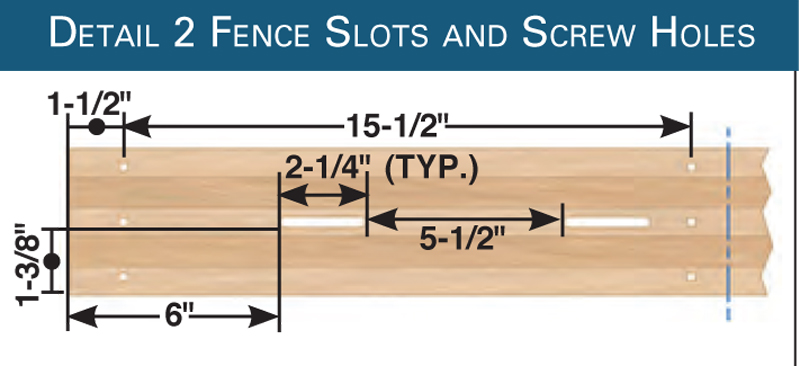 Add T-track (T) to the fence and aluminum angle to the rear brace (C). (Look for an aluminum angle with a square, not rounded, internal corner. This will be necessary for the aluminum stop arm (R) to fit tight against the T-track.) Drill and countersink pilot holes through the base for attaching the fence and braces (Fig. A, Detail 1).
Add T-track (T) to the fence and aluminum angle to the rear brace (C). (Look for an aluminum angle with a square, not rounded, internal corner. This will be necessary for the aluminum stop arm (R) to fit tight against the T-track.) Drill and countersink pilot holes through the base for attaching the fence and braces (Fig. A, Detail 1).

Install the fence assembly. Begin by driving one screw through the base and into the fence’s right end. This screw will serve as a pivot point when you adjust the fence in the next step. Install the brace that spans the other end of the base.
5. Attach the fence and braces. Put all the screws into the rear brace, but only one screw into the fence’s right end. Temporarily attach a block at the fence’s left end.
Align the fence
6. Set the fence approximately square. The easiest way is to align it with your table saw’s rip fence using a carpenter’s square. Once aligned, clamp the sled’s fence to the temporary block you added in step 5. Remove the sled from the saw and raise the blade 1 in. or so, just enough to cut through the base and 1/4-in. thick plywood.

Insert playing card shims between the fence’s left end and a block that’s temporarily screwed to the base. Clamp the fence to the block. Check the squareness of the fence with a test cut. Add or remove playing cards to rotate the fence’s left end forwards or backwards as needed.
7. Make a test cut with a piece of 1/4-in. plywood. Your first cut will split the base in half and go through the fence. Chances are the cut won’t be perfectly square, however. To adjust the fence, add or remove playing card shims between the temporary block and the fence (as shown above). Make a few more test cuts. Once the sled cuts perfectly square, turn it over and drive the eleven remaining screws through the bottom of the base and into the fence. Add the guard parts. Attach the subfences, make the stops and you’re all set.

Add the subfences. Butt them tight together, centered over the kerf in the sled’s base. Make a saw cut to create a zeroclearance opening in the subfences. This opening will gradually widen with normal use. To make a new zero-clearance opening, remove the subfences, recut their ends and reinstall them.
Here are some supplies and tools we find essential in our everyday work around the shop. We may receive a commission from sales referred by our links; however, we have carefully selected these products for their usefulness and quality.



 A split fence guarantees accurate cuts.
A split fence guarantees accurate cuts.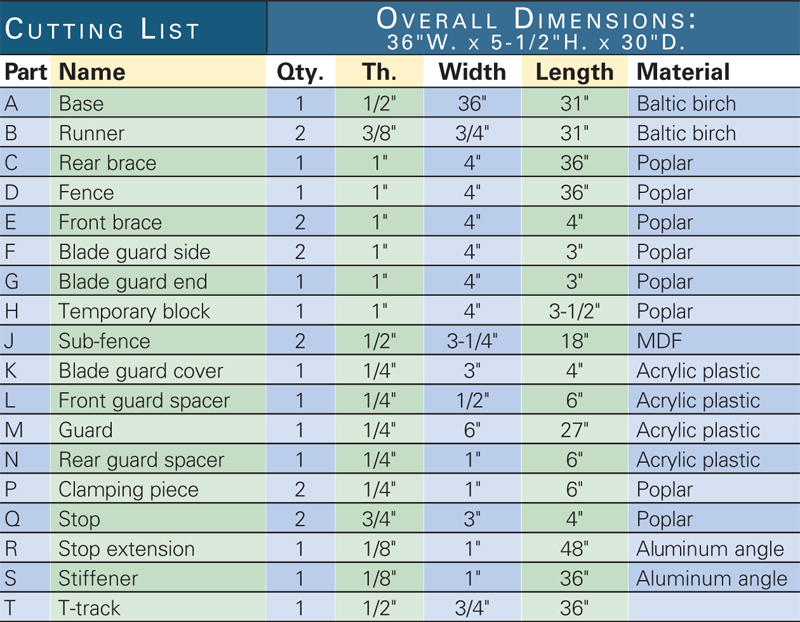

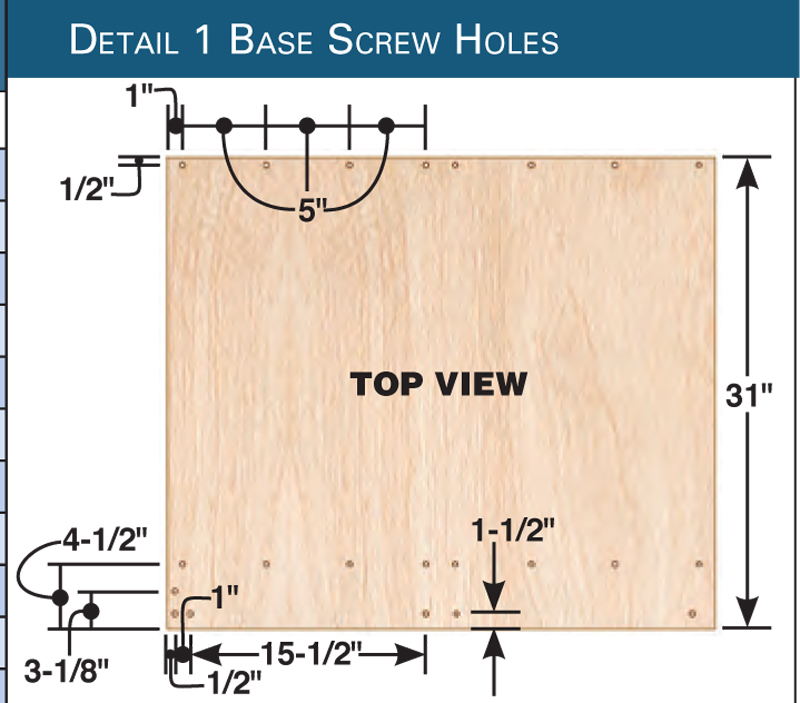






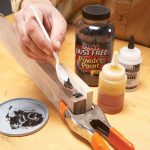
4. Insert playing card shims & 5. Add the subfences. is listed just before the Cutting list & figures. Where is 1 & 2?
It seems like I had read this article but can`t be sure. Makes no difference because it is a great design